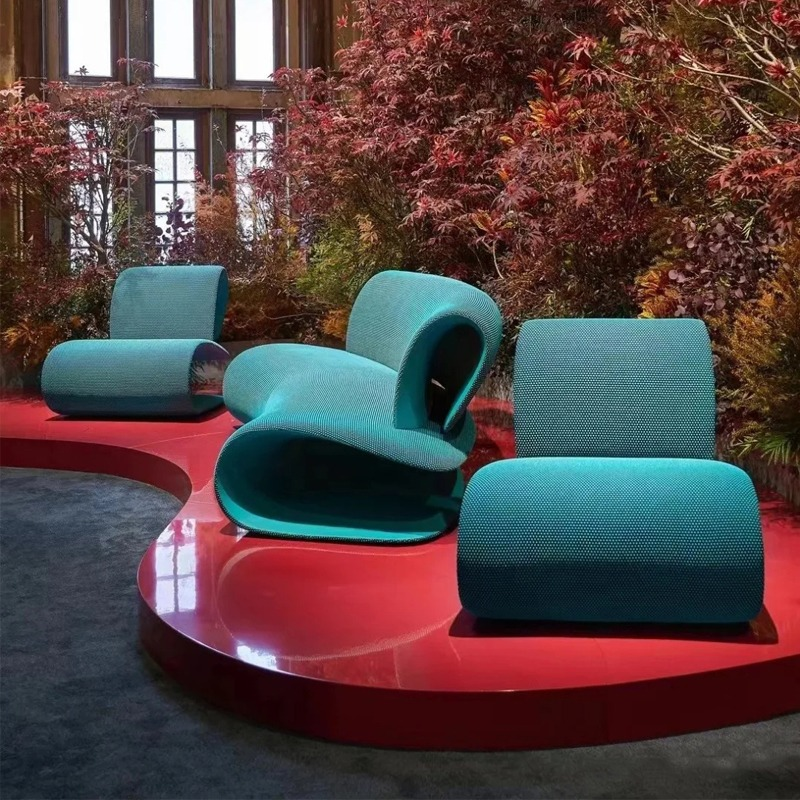Introduction
Rattan furniture is renowned for its durability, aesthetic appeal, and versatility, making it a popular choice for both indoor and outdoor settings. Understanding where rattan furniture manufacturers source their materials is crucial to appreciating the quality and sustainability of these products. This article explores the origins of rattan, the sourcing process, and the key considerations for manufacturers.
Natural Rattan Sourcing
Geographic Origins
Southeast Asia
The majority of natural rattan is sourced from Southeast Asia, particularly from countries such as Indonesia, Malaysia, and the Philippines. These regions have the ideal tropical climate and dense forests that rattan palms thrive in. Indonesia, in particular, is one of the largest producers and exporters of natural rattan.
Africa and South America
While Southeast Asia is the primary source, rattan can also be found in parts of Africa and South America. These regions contribute to the global supply, although on a smaller scale compared to Southeast Asia.
Harvesting Process
Sustainable Harvesting
Sustainability is a crucial aspect of rattan harvesting. Responsible manufacturers ensure that rattan is harvested sustainably to prevent deforestation and environmental degradation. This involves cutting the rattan canes at the right time and in a manner that allows the plant to regenerate.

Local Communities
In many regions, local communities are involved in the harvesting process. This not only provides them with a source of income but also ensures that the harvesting methods are sustainable and environmentally friendly. Manufacturers often collaborate with these communities to source high-quality rattan.
Synthetic Rattan Sourcing
Material Composition
Synthetic rattan, also known as poly rattan or resin wicker, is made from polyethylene (PE) or other synthetic fibers. These materials are designed to mimic the appearance and texture of natural rattan while offering enhanced durability and weather resistance.
Manufacturing Process
Raw Materials
The raw materials for synthetic rattan are typically sourced from chemical suppliers. These include high-density polyethylene (HDPE) and other polymers, which are then processed to create the synthetic fibers used in furniture production.
Production Techniques
Advanced manufacturing techniques, such as extrusion and weaving, are used to produce synthetic rattan. These techniques ensure that the synthetic fibers have the same flexibility and strength as natural rattan, making them suitable for furniture manufacturing.
Key Considerations for Manufacturers
Quality Control
Material Selection
Quality control starts with the selection of raw materials. Manufacturers like Maysun Furniture ensure that only the best quality natural or synthetic rattan is used in their products. This involves rigorous testing and inspection to guarantee durability and consistency.
Processing Standards
For natural rattan, processing involves cleaning, drying, and treating the canes to prevent pests and decay. For synthetic rattan, it involves ensuring that the fibers are UV-resistant and have the appropriate tensile strength. Adhering to high processing standards is essential for producing durable and high-quality furniture.
Environmental Impact
Sustainable Practices
Manufacturers committed to sustainability adopt practices that minimize environmental impact. This includes using eco-friendly treatments for natural rattan and recycling waste materials during the production of synthetic rattan.
Certifications
Certifications such as FSC (Forest Stewardship Council) for natural rattan and eco-labels for synthetic materials provide assurance that the materials are sourced and processed responsibly. Manufacturers often seek these certifications to demonstrate their commitment to sustainability.
Supply Chain Management
Reliable Suppliers
Establishing relationships with reliable suppliers is crucial for ensuring a steady supply of high-quality materials. Manufacturers often work with suppliers who have a proven track record of delivering consistent quality.
Ethical Sourcing
Ethical sourcing involves ensuring that the materials are obtained in a manner that respects the rights and livelihoods of local communities. This includes fair wages, safe working conditions, and respect for indigenous land rights.
Conclusion
Rattan furniture manufacturers source their materials from various regions and suppliers, with a strong emphasis on quality and sustainability. Natural rattan is primarily harvested from Southeast Asia, with a focus on sustainable practices and local community involvement. Synthetic rattan materials are sourced from chemical suppliers and processed using advanced manufacturing techniques. Key considerations for manufacturers include quality control, environmental impact, and ethical sourcing. By adhering to these principles, manufacturers like Maysun Furniture ensure that their rattan furniture is not only durable and stylish but also environmentally responsible and ethically produced.